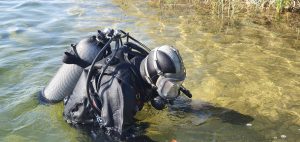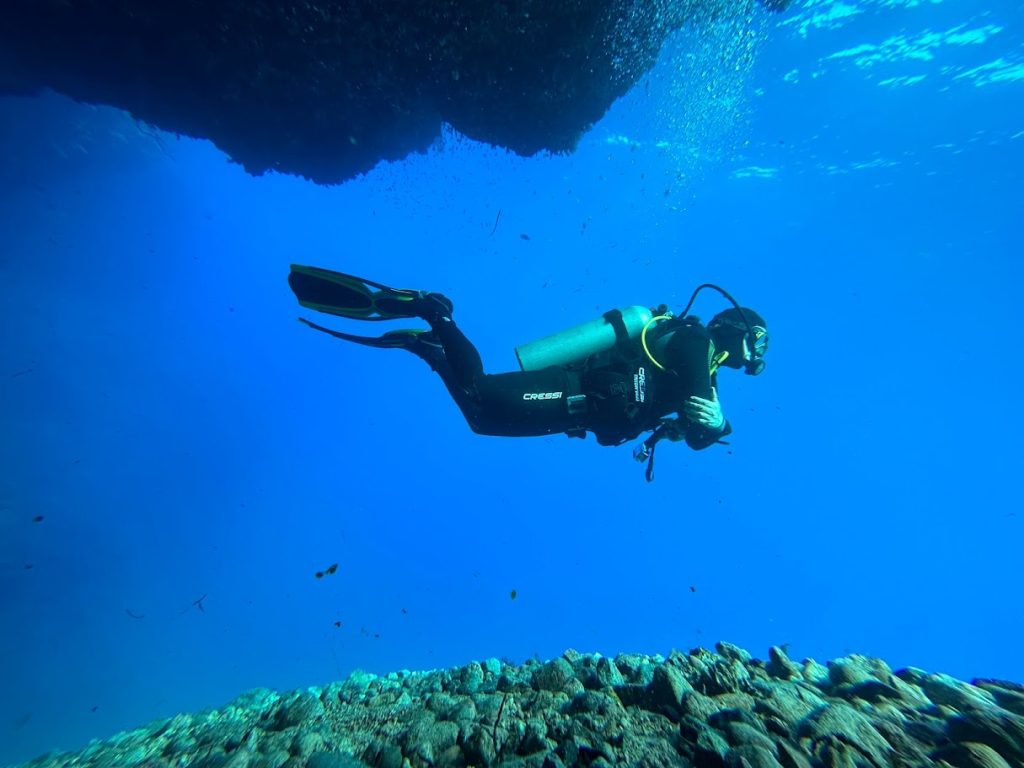Scuba diving is an exciting adventure that allows people to explore the underwater world and witness its breathtaking beauty. Inspection of divers' equipment, diving balloon is required annually, confirmed diving club "Daivings", equipment specialist and diving instructor Valters Preimanis.
Ensuring the safety and functionality of scuba equipment is paramount to a successful and safe diving experience. One of the most important components that requires regular inspection is the scuba tank. In this article, we'll dive into the importance of scuba tank testing, highlighting the key elements involved in the process.
A visual inspection of a diving balloon must be performed once a year, a hydrotest of the balloon must be performed once every five years, or more often if exposed to intense wear and tear.

Table of Contents
Safe use of scuba tanks is important
A scuba tank, also known as a diving balloon, is an important piece of underwater sports equipment that contains a compressed air or gas mixture for a diver to breathe. It is usually made of aluminum or steel and is designed to withstand high pressures of 200-300 BAR. Understanding the construction and components of a scuba tank is very important before starting the inspection process.
Visual inspection of diver balloons
A visual inspection is the first step in inspecting a scuba tank. This involves a thorough inspection of the exterior of the cylinder for any signs of physical damage, corrosion or structural abnormalities. Inspectors carefully assess the tank for dents, scratches or cracks that could compromise its integrity. In addition, yes Checked valve stem, O-rings and pressure gauge, to make sure they are working properly.

Inspection of the inner surface of divers' balloons
An internal inspection involves inspecting the inside of the scuba tank for signs of contamination or damage. This is usually done by trained professionals who use specialized equipment to assess the cleanliness and internal condition of the tank. They check for signs of rust, debris or moisture that could affect air quality or compromise the integrity of the tank.
Hydrostatic testing
Hydrostatic testing is a critical process for evaluating the structural integrity of a scuba tank. This involves subjecting the cylinder to high pressure conditions to determine if it can withstand the specified pressure limits. This test is usually carried out every five years, ensuring that the cylinder is still safe and fit for use.
Ongoing maintenance
Regular maintenance and care is essential to a scuba tank to extend its life and ensure optimal performance. This includes rinsing the tank with fresh water after each dive, storing it in a dry and well-ventilated area, and following the manufacturer's instructions for maintenance schedules. It is also important to keep accurate records of inspections, tests and maintenance activities.

Summary
Checking your scuba tank is an essential aspect of diving safety. Through visual and internal inspections, as well as hydrostatic testing, tank integrity and functionality can be assessed. By following a regular inspection and maintenance schedule, divers can ensure that their scuba tanks are in optimal condition, reducing the risk of equipment failure and promoting a safe and enjoyable diving experience.
Remember, a properly inspected and maintained balloon tank is more than just a piece of equipment; it's a safe way that allows divers to explore the extraordinary underwater world with confidence.
Related information:



